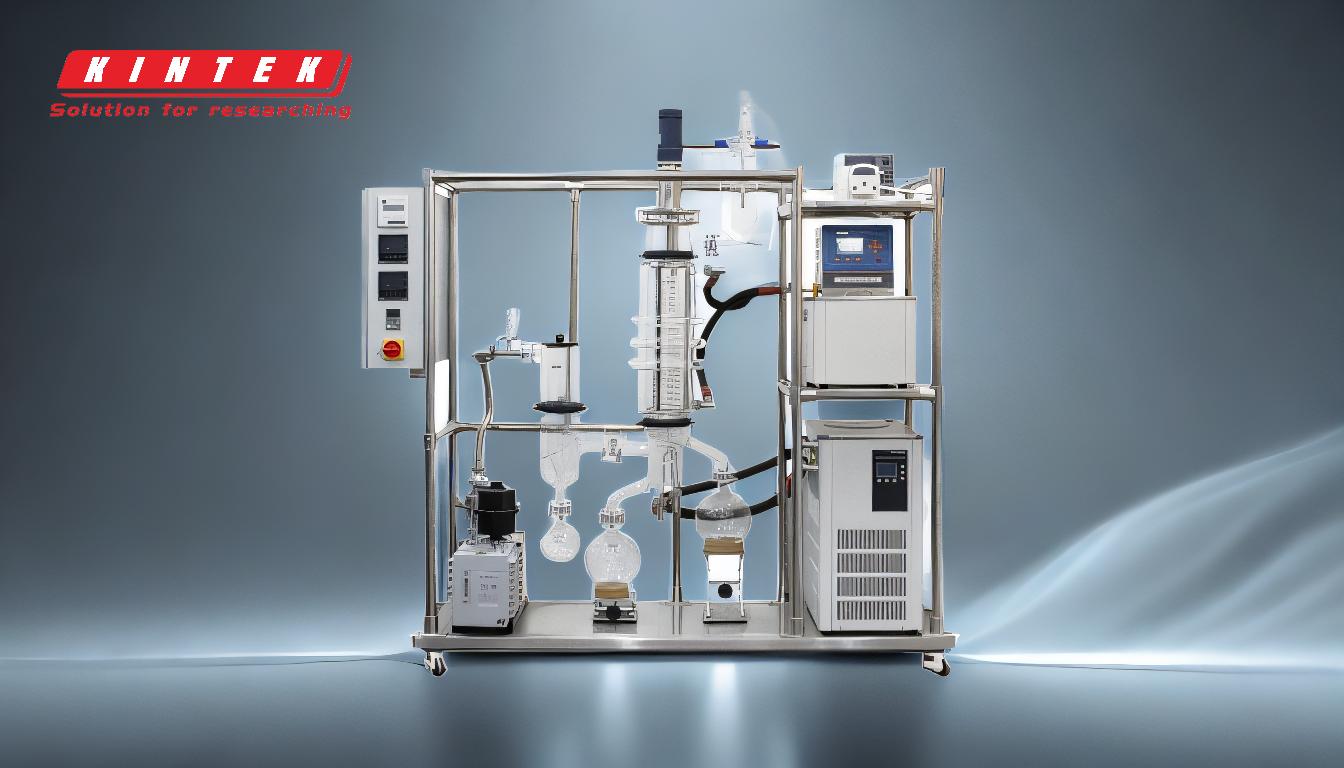Vacuum distillation is a technique used to separate and purify liquids by evaporating them at reduced pressure, which lowers their boiling points. This method is particularly useful for heat-sensitive compounds or those with high boiling points. The process involves setting up a distillation apparatus, connecting a vacuum pump to reduce pressure, heating the liquid to induce boiling, and condensing the vapor back into a liquid for collection. Proper sealing, temperature control, and vacuum adjustment are critical to ensure efficient separation and prevent over-boiling.
Key Points Explained:

-
Principle of Vacuum Distillation:
- Vacuum distillation relies on the principle that reducing pressure lowers the boiling point of liquids. This allows for the separation of compounds at lower temperatures, making it ideal for heat-sensitive materials or those with high boiling points.
- The process involves evaporating the liquid under reduced pressure, condensing the vapor, and collecting the purified distillate.
-
Equipment Setup:
- Distillation Flask: Contains the liquid mixture to be distilled.
- Condenser: Cools the vapor back into a liquid.
- Receiver: Collects the condensed distillate.
- Vacuum Pump: Reduces the pressure in the system to lower the boiling point.
- Vacuum Trap: Prevents contaminants from entering the vacuum pump, often using a dry ice and alcohol mixture.
- Heating Mantle: Provides controlled heating to the distillation flask.
- Chiller: Circulates cooling fluid through the condenser and jacketed receiver.
-
Steps to Perform Vacuum Distillation:
- Assemble the Apparatus: Set up the distillation flask, condenser, and receiver. Ensure all joints are greased and vacuum-tight to prevent leaks.
- Connect the Vacuum Pump: Attach the vacuum pump to the system and ensure a tight seal. Turn on the pump and allow it to reach the desired vacuum level (typically below 50 millitorr for short-path distillation).
- Prepare the Cooling System: Connect the chiller to the condenser and jacketed receiver, and circulate the cooling fluid. Add dry ice and alcohol to the vacuum trap if necessary.
- Heat the Mixture: Start heating the distillation flask at a low temperature (e.g., 45-60°C) and gradually increase the temperature while monitoring the vacuum level to prevent over-boiling.
- Collect the Distillate: As the liquid boils and vaporizes, the vapor travels through the condenser, where it is cooled and collected in the receiver as a purified liquid.
-
Key Considerations:
- Sealing: Ensure all connections are airtight to maintain the vacuum and prevent contamination.
- Temperature Control: Gradually increase the temperature to avoid sudden boiling or decomposition of the liquid.
- Vacuum Adjustment: Monitor and adjust the vacuum level to optimize the separation process and prevent over-boiling.
- Cooling Efficiency: Ensure the condenser and chiller are functioning effectively to condense the vapor efficiently.
-
Applications of Vacuum Distillation:
- Chemical Industry: Used to purify heat-sensitive chemicals or separate high-boiling-point compounds.
- Pharmaceuticals: Ideal for isolating and purifying active pharmaceutical ingredients (APIs) without degrading them.
- Essential Oils: Commonly used to extract and purify essential oils from plant materials.
- Petroleum Refining: Separates crude oil into fractions with different boiling points under reduced pressure.
-
Advantages of Vacuum Distillation:
- Lower Operating Temperatures: Reduces the risk of thermal degradation of sensitive compounds.
- Energy Efficiency: Requires less energy compared to atmospheric distillation for high-boiling-point liquids.
- Improved Separation: Enhances the purity of the distillate by preventing unwanted reactions or decomposition.
-
Challenges and Precautions:
- Leak Prevention: Any leaks in the system can compromise the vacuum and reduce efficiency.
- Safety: Ensure proper handling of the vacuum pump, heating equipment, and cooling fluids to avoid accidents.
- Material Compatibility: Use glassware and seals that can withstand the reduced pressure and temperature conditions.
By following these steps and considerations, vacuum distillation can be effectively performed to achieve high-purity separation of liquids. Proper setup, monitoring, and adjustment are essential for successful results.
Summary Table:
| Aspect | Details |
|---|---|
| Principle | Reduces pressure to lower boiling points, ideal for heat-sensitive compounds. |
| Equipment | Distillation flask, condenser, vacuum pump, heating mantle, chiller. |
| Steps | Assemble apparatus, connect vacuum pump, heat mixture, collect distillate. |
| Applications | Chemical industry, pharmaceuticals, essential oils, petroleum refining. |
| Advantages | Lower operating temperatures, energy efficiency, improved separation. |
| Challenges | Leak prevention, safety precautions, material compatibility. |
Ready to optimize your distillation process? Contact us today for expert guidance and solutions!











